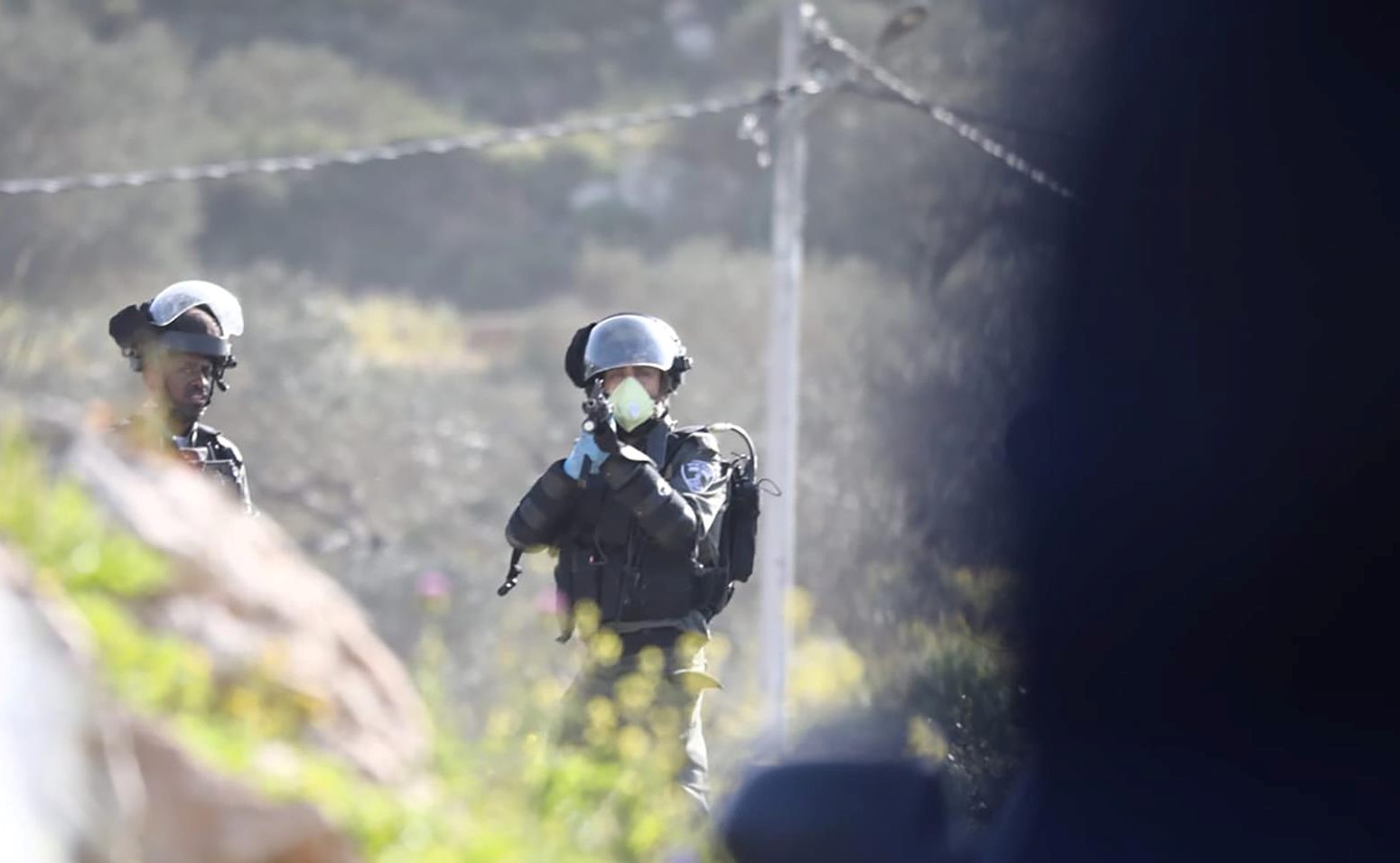Despite the global coronavirus crisis, Israeli military violence against Palestinians continues as usual in the occupied West Bank, resulting in scores of victims. Last Friday, March 13, Israeli occupation forces wounded at least two Palestinians, including a journalist, during the weekly protest against Israeli settlements in the village of Kafr Qaddum in the northern West Bank, the Palestinian news agency Wafa reported.

Israeli forces fire at Palestinians on Jabal al-‘Arma, last Wednesday, March 11. (Photo: Activestills)
Morad Shtewi, coordinator of the popular resistance in the village, told Wafa that Israeli soldiers attacked the protesters with rubber-coated bullets, wounding two, including Ja’far Shtayyeh, a photojournalist affiliated with the Agence France-Presse; 17 others also suffered from inhaling teargas fired by Israeli forces. The Palestinian Journalists Syndicate condemned the targeting of photojournalist Shtayyeh by Israeli soldiers, describing it as a product of an intentional campaign against Palestinian journalists by the Israeli government.
For many years, residents of Kafr Qaddum and neighboring villages have been protesting every Friday against illegal Israeli settlements, and have been calling on Israeli authorities to reopen the village’s main road, which has been sealed off by the occupation authorities since 2002
On Thursday, March 12, Israeli settlers attacked Palestinian homes in the village of Einabus, to the south of the northern West Bank city of Nablus, according to official sources. Ghassan Daghlas, who monitors settlement construction in the northern West Bank, told Wafa that settlers from the illegal Israeli settlement of Yitzhar stole into the village in the early morning and hurled rocks at two homes, breaking their windows. He said the settlers also vandalized the car of another resident and smashed its windows. Daghlas said settlers also broke into a building on Tuesday, March 10, that was under construction in the village of Burin, to the south of Nablus, and demolished parts of it.
Israeli settler violence against Palestinians and their property is commonplace in the West Bank and is rarely prosecuted by Israeli authorities. It includes arson of property and mosques, stone throwing, uprooting of crops and olive trees, attacks on vulnerable homes, among other crimes.
On Wednesday, March 11, a 15-year-old Palestinian, Mohammed Abdel Karim Hamayel, was mortally wounded during a protest in the West Bank village of Beita, being shot in the head with live fire by Israeli forces positioned on Jabal al-‘Arma. Clashes between hundreds of demonstrators and Israeli soldiers ensued after the forces evicted a Palestinian encampment on village lands to allow Israeli settlers to pass through; 17 protesters were injured, including the fatally wounded 15-year-old. Wafa reported that Hamayel succumbed to his injuries at the Rafida Government Hospital where, according to Tarif Ashour, a spokesman for the Palestinian Health Ministry, among the wounded was head of the Anti-Wall and Settlement Committee, Walid Assaf.
Following Wednesdays violence, Israeli settlers renewed their attempt to reach the top of Jabal al-‘Arma at night, but hundreds of the residents of Beita, which lies south of Nablus, repelled them. The villagers from Beita have continued their daily sit-ins atop the mountain since Friday February 28, when settlers first tried to seize the mountain and turn it into an Israeli religious tourist trail. That confrontation left 93 Palestinians wounded by Israeli live fire and rubber-coated bullets. Palestinians say settlers had been emboldened by US President Donald Trump’s Middle East plan and Israeli Prime Minister Benjamin Netanyahu’s promise to annex settlements.
Jabal al-‘Arma, which covers an area of 250 dunams (25 hectares or about 62 acres), is one of the most ancient and important archeological sites in the district of Nablus, and is the highest peak in the village of Beita. According to historians, it has been continually inhabited since the early Bronze Age, i.e., from about 3,200 years ago. Atop the mountain lie walls which evince an ancient fortification that stood here, beneath which seven water cisterns were hewn into the solid rock.


